Stem Cell Therapy in Monterrey
Search and Compare the Best Clinics and Doctors at the Lowest Prices for Stem Cell Therapy in Monterrey
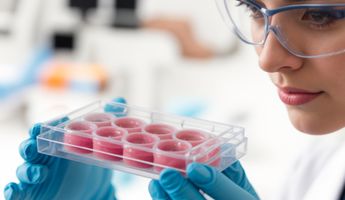
Find the best clinics for Stem Cell Therapy in Monterrey
With Medijump you can browse 1 facilities offering Stem Cell Therapy procedures in Monterrey. The cheapest price available is $1,316 in Playa del Carmen. And for the cheapest price globally, prices start from $0 in Thailand.
Stem Cell Therapy in Mexico
Price: $ 1,316
Stem Cell Therapy in Playa del Carmen
Price: $ 1,316
Thailand offers the best prices Worldwide
Price: $ 0
From 89 verified reviews
Arturo Millán Guadarrama, 16 September 2020
Excellent place, very good attention, trained staff
Compare Before & After Photos of _procedure_photos.phpStem Cell Therapy
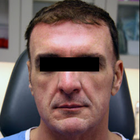

Front view


Front view
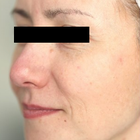
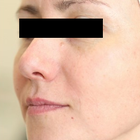
Half-side view
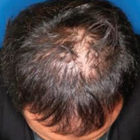
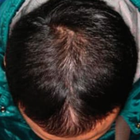
Front view
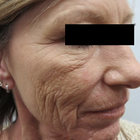
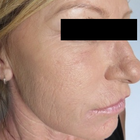
Half-side view
WHY US?
At Medijump, we're making medical easy. You can search, compare, discuss, and book your medical all in one place. We open the door to the best medical providers worldwide, saving you time and energy along the way, and it's all for FREE, no hidden fees, and no price markups guaranteed. So what are you waiting for?

Free

Best Price

Widest Selection

Risk-Free
What you need to know about Stem Cell Therapy in Monterrey
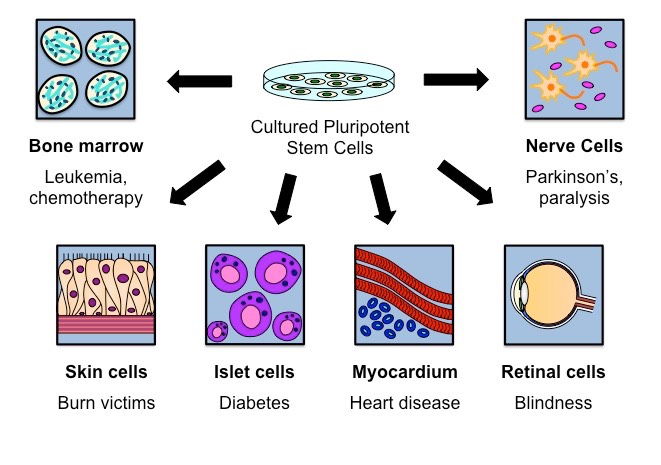
Stem Cell Therapy involves the use of stem cells to treat different diseases. These are non-differentiated cells of a multicellular organism. All the cells in the body are specialized for a specific function but they are the only cells without an assigned function. They can differentiate into any type of cell as and when required by the body and can proliferate rapidly to produce multiple copies of a specific type. Sources of stem cells are embryos and adult body tissues. In the adults, stem cells are present in bone marrow, brain, liver, skin, skeletal muscles, blood and blood vessels. While embryonic stem cells are derived from a blastocyst. Nowadays, the Umbilical cord is being stored under suitable conditions to get stem cells from it if needed. This is useful as chances of transplant rejection are less because stem cells are derived from your own umbilical cord.
Bone Marrow Transplant is the most commonly used method to treat various types of cancers such as lymphoma, multiple myeloma, and leukemia, etc. through stem cells. It is also used to treat brain diseases, cardiovascular diseases and cell deficiencies such as diabetes mellitus. Recently, anti-aging stem cell treatments have gain fame. It is used to restore your youth and beauty.
What is the cost of Stem Cell Therapy in Monterrey?
The price of stem cell therapy, also known as Stem Cell Therapy, can fluctuate greatly based on factors like the intricacy and specifics of the procedure, the particular health issue being addressed, and the geographic site of the therapy center or clinic. When compared to conventional therapies, stem cell therapy's cost tends to be rather steep.
Yet, when considering the prospective benefits and potential long-term economic advantages, an increasing number of patients are choosing this therapeutic approach. It's crucial to mention that, although certain health insurance firms may cover the expenses of stem cell therapy for specific situations, a number of them do not due to the considerate speculative aspect of the therapy.
What does a Stem Cell Therapy Procedure Involve?
The procedure of stem cell therapy starts with removing stem cells from your body or from the donor’s body. The cells are collected from different body parts depending upon the need. After collection, the cells are processed according to the purpose for which they are extracted. The processed stem cells are injected into the specific area of your body using ultrasound or X-ray guidance. Anesthetics are used and the procedure is done under sterile conditions. It is necessary to make sure that the cells are reaching the desired area so that the improvement is better and quicker. There are three types of stem cell transplant:
- Autologous transplant - your own body stem cells are removed and used. This type of transplant is safer and recovery is quicker because chances of transplant rejection are less as your own stem cells are being used.
- Allogenic transplant - stem cells are obtained from a suitable donor. Matching is done to find a donor whose white cell antigen closely resembles yours. The donor can or cannot be your relative.
- Syngeneic transplant - stem cells from your identical twin are used. In this case, the chances of rejection are low.
Each type of stem cell transplant involves different methods, procedures, and techniques with different side effects and risks. The one suitable for you depends upon your age, health, and physical conditions.
How Long Should I Stay in Monterrey for a Stem Cell Therapy Procedure?
The length of stay in the hospital varies in accordance with the condition for which stem cell therapy is being done. It is usually a 3 to 4 hours procedure (in-patient) in which stem cells are introduced into the body using syringes or catheters. Different factors are considered to decide the length of your stay in the hospital. These factors are:
- You are not suffering from a fever for the last 24 to 48 hours.
- You have a safe blood cell count.
- You are able to eat and drink.
- Your symptoms such as nausea, vomiting, and diarrhea are under control.
- You have someone with you to look after you.
Your stay in the hospital is longer for an allogeneic transplant as compared to an autologous transplant and you're free to leave Monterrey the very next day, although it's advised to stay at least a few days in case you have further questions for the medical staff. But of course, these can be asked over the phone/email or directed towards your local medical team back home.
What's the Recovery Time for Stem Cell Therapy Procedures in Monterrey?
Complete recovery time varies from 2 to 12 weeks when the patient begins to feel pain relief. However, you can return to your routine work a couple of days after going through the transplant. Recovery depends upon your physical condition before and after the transplant. Over a period of 6 to 12 months, further improvements are seen in the patients. During the process, antibiotics and other drugs are prescribed. These drugs prevent transplant rejection and graft-host diseases. Allogenic stem cell transplant takes longer to recover than an autologous transplant.
What sort of Aftercare is Required for Stem Cell Therapy Procedures in Monterrey?
It is advised to keep in contact with your doctor and to visit them on a regular basis. Apart from this, the following points should be considered:
- Minor pain will be present after going through the therapy - icepacks are effective in this regard. Pain might either be because of inflammation or muscle spasm. Inflammation is common due to your immune system activity. Anti-inflammatory medicines are avoided in the initial period because they can interfere with the healing process.
- Walking is good for your health. Rest is not always the best option for quick recovery. Blood flow and oxygen is needed by the treated area which is provided by light activity and movement.
- Ask your doctor about your nutritional requirements and eat healthy according to it.
- Do some joint stabilizing exercises to aid the healing process.
What's the Success Rate of Stem Cell Therapy Procedures in Monterrey?
Stem cell therapy's effectiveness, also known as Stem Cell Therapy, can change based on the illness, the age and health of the patient, and the type of therapy used. Although new, stem cell therapy has shown promise in areas like bone, brain, and heart health, it is not always successful due to various reasons, one being the transplant rejection. It is an excellent idea to talk about the possible good and bad outcomes with your doctor before making a choice.
Are there Alternatives to Stem Cell Therapy Procedures in Monterrey?
Exosomes are being used as an alternative to stem cell therapy. They are lipid bilayer surrounded vesicles secreted by live cells. They contain mRNA, proteins, chaperons, and various signaling molecules. They work as a natural carrier system for the transport of these substances. They function as a messenger within the body carrying information from one cell to the other. Stem cell therapy can be enhanced using exosomes. They help the body’s natural healing ability to increase the pace of recovery. Sometimes, stem cell therapy and exosomes are given together for better results.
What Should You Expect Before and After the Procedure
Before you proceed with the Stem Cell Therapy, it's typical to have a meeting with your medical professional to examine your unique situation, the potential advantages and drawbacks of the process, and your overall wellness. This discussion will help determine if stem cell therapy is suitable for you. Comprehensive diagnostic evaluations may be necessary to fully examine your health status. The medical professional will guide you through the procedure, describing how the treatment is carried out, what it involves, and what to anticipate. The significance of regular physical activity and keeping a balanced lifestyle before the procedure to boost the effectiveness of the treatment shouldn't be overlooked.
Following the completion of the Stem Cell Therapy, you might feel a slight discomfort, redness, or swelling at the injection site, which typically subsides within a few days. Keep in mind that the recovery process post-procedure may take several weeks or months, as the reinstated stem cells function to fix and reconstruct the damaged tissues. Therefore, a degree of patience may be necessary before noticing the advantages of the treatment. Regular follow-up appointments with your medical professional to monitor your body's reaction to the treatment, assess progress, and control any possible side effects, are necessary. Reinforcing healthy habits such as a balanced diet, frequent physical activity, sufficient sleep, and stress control are crucial components of the post-procedure care.
What are Potential Risks of Stem Cell Therapy?
As with any medical intervention, Stem Cell Therapy is not devoid of risk. However, given that the patients' own cells are generally used, the chance of rejection or allergy is quite low. Possible complications may encompass infection, hemorrhage, or an adverse response to the anesthesia utilized during the operation. Moreover, while stem cells possess the extraordinary capacity to transform into various cell types in the body, there is a possibility they could proliferate without control, leading to the formation of tumors. Nevertheless, such instances are incredibly infrequent and are chiefly linked with embryonic stem cells, rather than the adult stem cells usually employed in the majority of Stem Cell Therapy procedures.
What are the Long-Term Effects of Stem Cell Therapy?
The enduring impacts of stem cell treatment, a fairly recent medical specialty, continue to be probed by scientific research. Nevertheless, some scholarly investigations propose that such a treatment method could offer a sustainable easing of symptoms and potentially decelerate the advancement of particular ailments. The influence of this therapeutic approach differs significantly among individuals and is significantly dependent on factors such as a person's comprehensive health status, the kind and gravity of the disease under treatment, and the specific treatment regimen pursued.
Whilst the information presented here has been accurately sourced and verified by a medical professional for its accuracy, it is still advised to consult with your doctor before pursuing a medical treatment at one of the listed medical providers
No Time?
Tell us what you're looking for and we'll reachout to the top clinics all at once
Enquire Now

Popular Procedures in Monterrey
Prices Start From $273

Prices Start From $2,000

Prices Start From $126

Recommended Medical Centers in Monterrey for Stem Cell Therapy

- Interpreter services
- Translation service
- Religious facilities
- Medical records transfer
- Medical travel insurance
- Health insurance coordination
- TV in the room
- Safe in the room
- Phone in the room
- Private rooms for patients available

- Interpreter services
- Translation service
- Religious facilities
- Medical records transfer
- Medical travel insurance
- Health insurance coordination
- TV in the room
- Safe in the room
- Phone in the room
- Private rooms for patients available

- Interpreter services
- Translation service
- Religious facilities
- Medical records transfer
- Medical travel insurance
- Health insurance coordination
- TV in the room
- Safe in the room
- Phone in the room
- Private rooms for patients available

- Interpreter services
- Translation service
- Religious facilities
- Medical records transfer
- Medical travel insurance
- Health insurance coordination
- TV in the room
- Safe in the room
- Phone in the room
- Private rooms for patients available

- Interpreter services
- Translation service
- Religious facilities
- Medical records transfer
- Medical travel insurance
- Health insurance coordination
- TV in the room
- Safe in the room
- Phone in the room
- Private rooms for patients available

- Interpreter services
- Translation service
- Religious facilities
- Medical records transfer
- Medical travel insurance
- Health insurance coordination
- TV in the room
- Safe in the room
- Phone in the room
- Private rooms for patients available

- Interpreter services
- Translation service
- Religious facilities
- Medical records transfer
- Medical travel insurance
- Health insurance coordination
- TV in the room
- Safe in the room
- Phone in the room
- Private rooms for patients available

- Interpreter services
- Translation service
- Religious facilities
- Medical records transfer
- Medical travel insurance
- Health insurance coordination
- TV in the room
- Safe in the room
- Phone in the room
- Private rooms for patients available

- Interpreter services
- Translation service
- Religious facilities
- Medical records transfer
- Medical travel insurance
- Health insurance coordination
- TV in the room
- Safe in the room
- Phone in the room
- Private rooms for patients available

- Interpreter services
- Translation service
- Religious facilities
- Medical records transfer
- Medical travel insurance
- Health insurance coordination
- TV in the room
- Safe in the room
- Phone in the room
- Private rooms for patients available
Stem Cell Therapy in and around Monterrey
About Monterrey
Nuevo León, a northeastern state in Mexico, takes pride in its capital, Monterrey, a major financial hub for the nation. Serving as a manufacturing and industrial center, Monterrey is also home to a plethora of large Mexican and international businesses. With an impressive GDP (PPP) amounting to US$ 123 billion, it holds the distinction of being the second-most productive city in Mexico. Additionally, its population marking of 5 million residents simultaneously places it as the country's third-most populous city.
Monterrey has successfully carved out a reputation in the tourism sector, particularly drawing global attention as a favored destination for medical tourism. The underlying factors for this growing attraction can be attributed to the following reasons:
- The healthcare industry, banking, and telecommunication are the pillars of the City’s economy.
- The City has some acclaimed hospitals that offer cutting edge treatments. Most hospitals have JCI accreditation, a certification that ensures safety and quality across the healthcare industry.
- Low prices and above-average quality of medical care are the two main reasons that attract medical tourist attention.
- Proximity to the US also provides a big advantage to patients and tourists from the United States of America.
- The most popular procedures are breast augmentation and liposuction and are performed at Dr. Sauceda Plastic Surgery, Dr. Alvar Garcia Plastic Surgery Monterrey, and Dr. David Kirsch M.D. Cosmetic Surgery
Popular Areas in Monterrey
-
The Macroplaza is the largest park in Mexico and is surrounded by many historical buildings and museums. It is a popular spot for locals and tourists alike to relax and enjoy the outdoors.
-
Fundidora Park is a heritage museum and public park that was once home to a steel mill. Today, the park is a popular destination for families and tourists alike, with a variety of attractions including a museum, a zoo, and an amusement park.
-
The Museum of Modern Art displays the works of Ricardo Mazal, Antony Gormley, and Jenny Holzer. The museum is noted for its sculpture yard and restaurant.
-
Cerro de la Silla, Is popular for its great urban hiking trail up the tall mountain for its fantastic view of Monterrey and the surrounding areas.
-
Cerro del Obispado is a historical site that houses a museum and offers panoramic views of the city. It is a popular spot for tourists and locals alike to learn about the history of Monterrey and enjoy the views.
-
To get a glimpse of a traditional wrestling match, Coliseo is the place to be. If you are lucky and brave enough, then you may even get to see a traditional bullfight.
Weather and Climate in Monterrey
It has a dry climate and is one of the hottest cities in Mexico, winters tend to be moderate, while summers can reach high levels of heat. The hot season, which spans from May to September, is often accompanied by rainfall. For the rest of the year, the climate remains mild with relatively minimal temperate fluctuations, and there's hardly any rain during the cold season.
Monterrey can exhibit drastic shifts in its weather scenarios. For instance, a sudden shower during the summer can cool the temperatures down significantly. Conversely, the winter season might witness balmy temperatures in the absence of city-crossing winds. Instances of ice, snow, and sleet are quite the rarity in this region.
Getting around in Monterrey
In Monterrey, there are primarily two airports dedicated to catering a variety of air traffic. The main airport used for commercial flights is Monterrey International Airport. The secondary airport, comparatively smaller, primarily serves private and cargo aircraft traffic. Monterrey International Airport efficiently accommodates a mix of both international as well as domestic travel audiences.
American, United, Delta, and Copa are some of the international airlines that connect it to Houston, Los Angeles, Atlanta, Chicago, Detroit, Dallas, Las Vegas, San Antonio, etc. People can travel to the nearby Mexican cities of Guadalajara, Mexico City, Cancun, Mazatlan, Puerto Vallarta, and Tijuana using Interjet, Aeromar, Magnicharters, and Volaris. At the same time Interjet, Aeromexico, and Viva Aerobus cater to both domestic and international travelers.
Monterrey houses the largest bus terminal in the northern region of Mexico, offering a significant connectivity advantage. Individuals can travel to and from Monterrey and various other bus stations dispersed across Mexico and the US using trans-border buses. Given Monterrey’s closeness to the US-Mexico border, a car ride from the US is another feasible transportation choice.
Moving around within the city is quite feasible and straightforward. Although efficient, the subway system's coverage is relatively limited. The optimum choice for commuting is the taxi service, which may come with a slightly higher cost compared to bus rides. It's advisable to request the driver to go by the meter to guarantee fair charges.
Tourist Visas in Monterrey
Citizens of 67 countries, including Australia, Canada, Schengen countries, the USA, the UK, and Japan, do not need a tourist visa to visit Monterrey, Mexico, for up to 180 days, as long as their trip does not provide any monetary benefit to them. People who have a valid visa to the US and PR in Canada also do not need a separate visa to enter Mexico. The exemption is available to many countries in South America and the Caribbean Islands also. You can check your eligibility on the official website of the Mexican government.
Citizens of other countries will need to obtain a tourist visa to visit Monterrey, Mexico. The tourist visa is valid for six months from the date of entry. You can apply for a visa at the Mexican consulate in your country.
Required documents for a tourist visa:
- Valid passport with at least six months of validity remaining beyond your planned date of departure from Mexico.
- Visa application form.
- Two passport-sized photos.
- Proof of onward travel, such as a return flight ticket.
- Proof of financial resources, such as a bank statement or credit card statement.
- Visa processing fee.
Additional Information
- The local currency used in Monterrey, Mexico, is the Mexican peso (MXN). The exchange rate for the Mexican peso fluctuates daily, but it is currently trading between 20 and 21 Mexican pesos to the euro and 18 to 19 Mexican pesos to the US dollar.
- You can use a credit card for payment at big stores, hospitals, and restaurants. Smaller merchants and establishments may not accept credit cards. Therefore, it is better to carry some local currency. You can also use the ATMs available in the city to withdraw local currency. The use of cards may involve certain transaction charges. Tipping is not compulsory. However, people appreciate some form of tipping; somewhere between 10 to 15 % of the total bill is the norm. Porters also get tipped, say, 10 pesos per bag.
- Mexico Spanish or Castilian Spanish is the main language here. Locals can also communicate in English as well. It would still be an advantage if you can say some basic phrases in Spanish.
- The majority of the people living in Monterrey are Christians.
- Mexicans observe holidays on Christian festivals and some national holidays. Christmas and New Year’s Day are the two main public holidays. Independence Day on 16th September and Revolution day on the third Monday of November are the two main national holidays. Apart from this, there are many other holidays.
Popular Searches
- Plastic Surgery in Thailand
- Dental Implants in Thailand
- Hair Transplant in Thailand
- Breast Augmentation Thailand
- Gastric Sleeve in Thailand
- Gender Reassignment Surgery in Thailand
- Laser Hair Removal in Bangkok
- Botox in Bangkok
- Dermatology in Bangkok
- Breast Augmentation in Bangkok
- Coolsculpting in Bangkok
- Veneers in Turkey
- Hair Transplant in Turkey
- Rhinoplasty in Turkey
- Stem Cell Therapy in Mexico
- Rhinoplasty in Mexico
- Liposuction in Mexico
- Coolsculpting in Tijuana
- Rhinoplasty in Korea
- Scar Removal in Korea
- Gastric Sleeve in Turkey
- Bone Marrow Transplant in India
- Invisalign in Malaysia
- Plastic Surgery in the Dominican Republic
- Tummy Tuck in the Dominican Republic
- Plastic and Cosmetic Surgery in Poland
- Rhinoplasty in Poland
- Hair Implant in Poland
- Dental Implants in Poland
- IVF in Turkey
